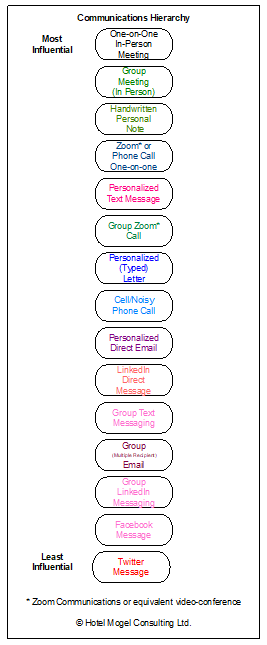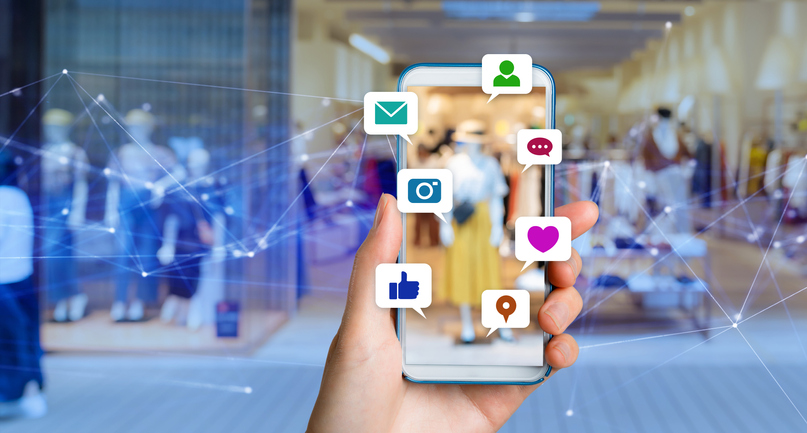Now that Covid is waning, it is time for us to re-examine how to use communications media to our full advantage. Going all the way back to Marshall McLuhan’s ‘the medium is the message’ proclamation, we’ve known that the type of channel you use to talk with a guest will influence satisfaction and customer spend. But the preferred mediums change as society does, especially in the wake of the internet, smartphones and the pandemic, and you need to pivot accordingly to maximize revenues.
To be fair, one of the more positive legacies of the pandemic has been the general acceptance of videoconferencing as a means of communications. Think of how many hours you have spent on Zoom, Teams or Meets. And we suspect, like us, you feel completely drained (read: eye burn) after half a dozen or more of these contacts back-to-back. But the efficiency of a series of video calls versus the logistics of in-person meetings are undeniable.

Have you ever noticed that in a videoconference some of the other participants seem to be scanning left to right while you speak? Could it be that these folks are multitasking, reading an email or something unrelated to the call? It is only common nature to expect that a good portion of the group has already mentally checked out, with their mind clearly elsewhere while the speakers drone on. And for your information, no matter how someone feels, humans are naturally horrible multitaskers, so if this is happening then it is likely driving down the overall meeting effectiveness.
Given the need for human connection, eye burn and increasing collaboration via more in-person gatherings, our hunch is that this medium has outlived its novelty; we’re well past ‘peak video calling’ in other words. Now, as a ‘mature’ option for our communications processes, it no longer has the aura that sustained its premier position in the hierarchy, and this is good news for hotels or travel overall.
Based on the diagram included, we count Zoom, Teams and equivalent products down a notch or two but certainly not out of the game. There is an important place for these digital get togethers. But don’t let anyone fool you; getting close and personal with someone – be it for selling, social or any other matter – wins hands-down over any other approach. (We’re leaving virtual reality and meetings in the metaverse out of this one, although once this medium goes mainstream it will likely find a place right near the top.)
As with previous versions of our communications grid, elevating the media increases the urgency of response as well as the emotional tonality conveyed. Those wishing to diffuse a situation may decide to move down the method of communications, thereby lessening the intensity as well as the immediacy of the response. On the other hand, nothing says, “I’m sorry,” quite like the in-person version.
Again, this is all good news for hoteliers looking to bring back guests in the post-pandemic travel world. Video will not replace the need for corporate travel; groups will still need to meet for live events. Sales personnel will again travel to meet their customers and actually close. Conferences and MICE will return. Those individuals who are reluctant to climb the travel mountain again will soon find themselves in the minority – our predication at least.
Above all, it behooves you to consider the diagram in terms of the emotions underpinning each level of the communications hierarchy, and then adjust your SOPs appropriately so that you are talking to guests in the right way as well as escalating in a suitable manner.
